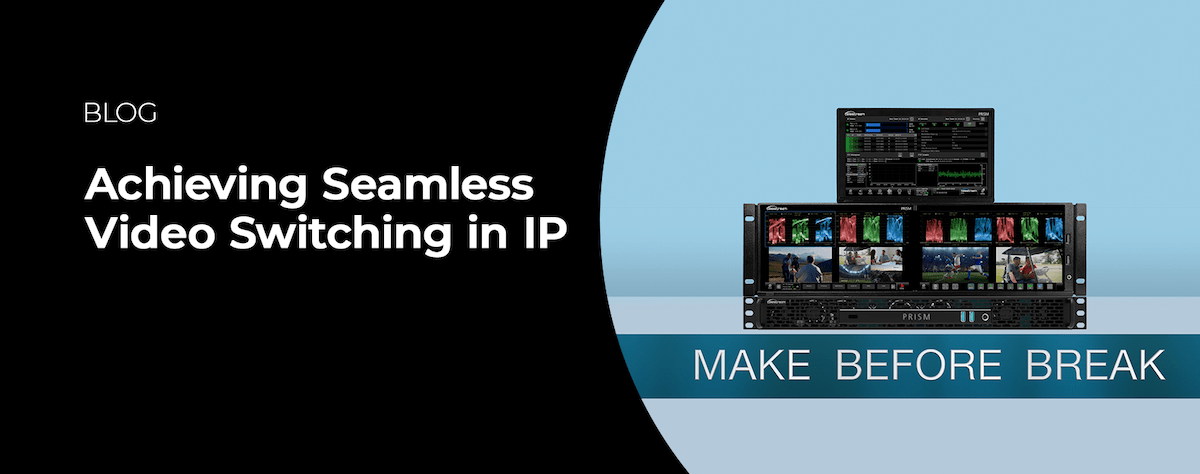Achieving Seamless Video Switching in IP Media Systems
For media production operators and engineering staff, migrating from SDI to IP workflows offers undeniable advantages, but replicating the critical task of fast video source switching can present a hurdle. We will dive into the world of IP Media systems to discuss how to achieve seamless switching in any IP video production environment.
Quickly switching between camera feeds for image level checks during camera shading is vital. In traditional SDI workflows, SDI Matrix panels provided instant source selection. But how do we replicate this efficiency in the IP realm, where protocols and packets reign supreme?
Understanding Switching Mechanisms in IP vs. SDI
Unlike SDI’s physical connections for transporting video, audio, and data, IP media networks rely on a complex interplay of protocols (API and NMOS) for streamlined packet delivery. Multicast sends a single source to multiple receivers, requiring the Internet Group Messaging Protocol for joining specific streams.
However, IP is asynchronous. When a receiver needs to switch sources, it typically employs a “Break Before Make” approach – leaving the current stream before joining the new one. This creates a gap, resulting in a disruptive glitch in the picture – far from ideal for seamless source switching.
Make Before Break Ensures Smooth Switching
IP Media systems offer a powerful process to combat these glitches: Make Before Break. You can configure your Telestream PRISM IP monitoring solution to take advantage of this effective approach.
Ready to achieve seamless video source switching and maintain familiar workflows in your IP environment? Watch our video on Make Before Break and the steps to configure PRISM for optimal results.

